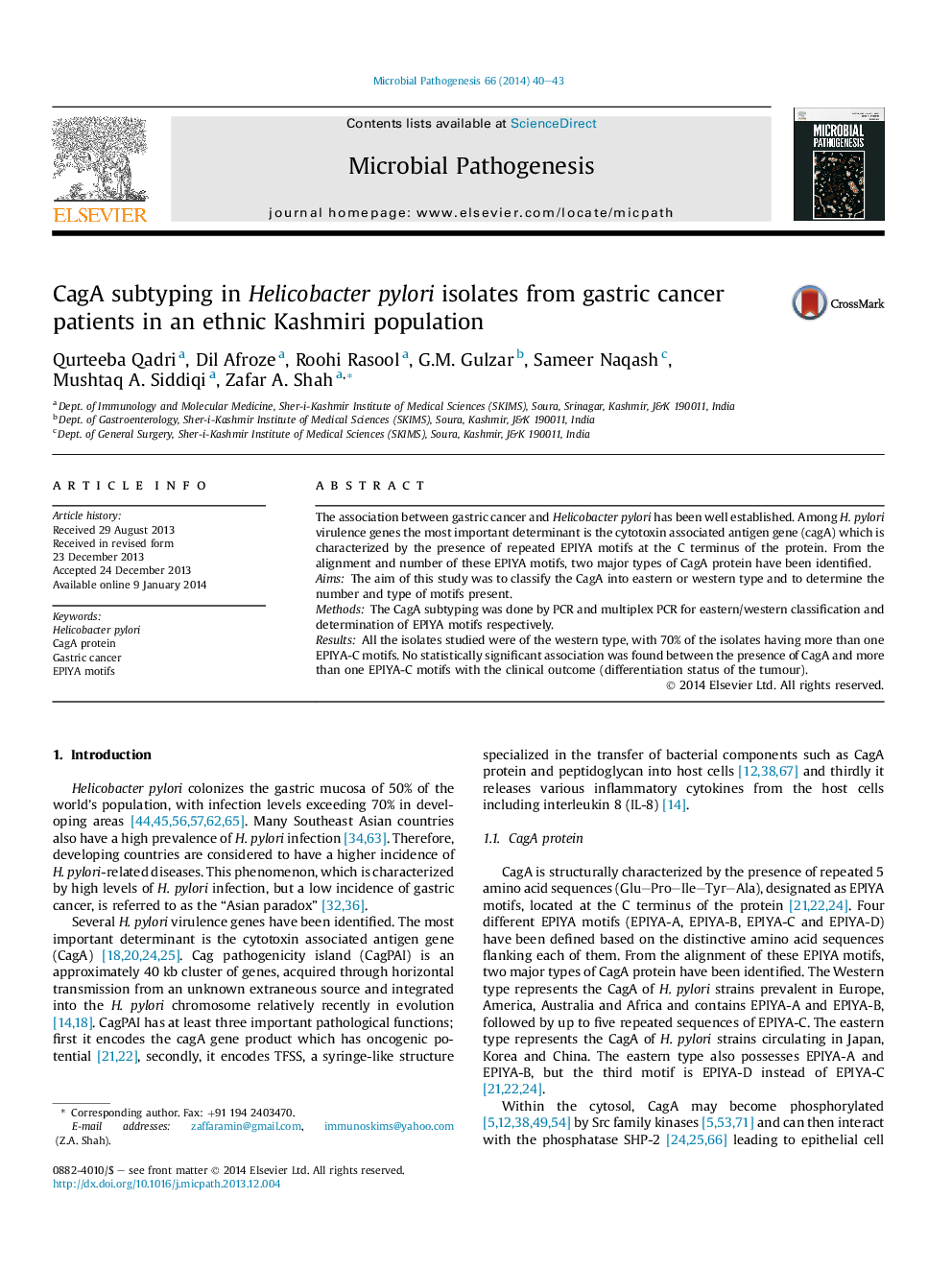| Article ID | Journal | Published Year | Pages | File Type |
|---|---|---|---|---|
| 3416671 | Microbial Pathogenesis | 2014 | 4 Pages |
•All the Helicobacter pylori CagA positive isolates studied in our ethnic Kashmiri population were of the western type.•70% of the isolates had more than one EPIYA-C motifs.•No statistically significant association was found between the presence of CagA and the clinical outcome.•No statistically significant association was found between the presence of more than one EPIYA-C motifs and clinical outcome.
The association between gastric cancer and Helicobacter pylori has been well established. Among H. pylori virulence genes the most important determinant is the cytotoxin associated antigen gene (cagA) which is characterized by the presence of repeated EPIYA motifs at the C terminus of the protein. From the alignment and number of these EPIYA motifs, two major types of CagA protein have been identified.AimsThe aim of this study was to classify the CagA into eastern or western type and to determine the number and type of motifs present.MethodsThe CagA subtyping was done by PCR and multiplex PCR for eastern/western classification and determination of EPIYA motifs respectively.ResultsAll the isolates studied were of the western type, with 70% of the isolates having more than one EPIYA-C motifs. No statistically significant association was found between the presence of CagA and more than one EPIYA-C motifs with the clinical outcome (differentiation status of the tumour).
